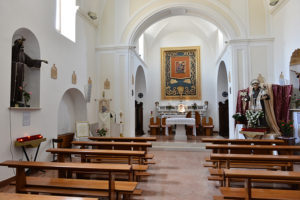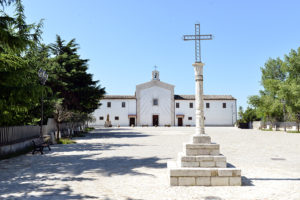 The church was consecrated on 12 July 1713. In view of the Murattian suppression, on 16 August 1808 an inventory of the friary was carried out by a Lieutenant Domenico Perna and by the Mayor Felice Di Mattia. A copy of this inventory was consigned to the Superior, Fr. Felice of Gildone. The friary was not suppressed thanks to the energetic intervention of the mayor who defended the generous work of the friars who “provide the Mass and the Sacraments… the people being most satisfied with them and if deprived of their exemplary assistance it would be a great loss… the friary being their only relief and that they willingly assist with their donations so as to provide for, at present, up to 17 persons.” Another reason for the mayor’s request not to suppress them was that this friary had the only wool mill in the Sant’Angelo province to make the material for the Capuchin friars’ habits.
The church was consecrated on 12 July 1713. In view of the Murattian suppression, on 16 August 1808 an inventory of the friary was carried out by a Lieutenant Domenico Perna and by the Mayor Felice Di Mattia. A copy of this inventory was consigned to the Superior, Fr. Felice of Gildone. The friary was not suppressed thanks to the energetic intervention of the mayor who defended the generous work of the friars who “provide the Mass and the Sacraments… the people being most satisfied with them and if deprived of their exemplary assistance it would be a great loss… the friary being their only relief and that they willingly assist with their donations so as to provide for, at present, up to 17 persons.” Another reason for the mayor’s request not to suppress them was that this friary had the only wool mill in the Sant’Angelo province to make the material for the Capuchin friars’ habits.

It was closed down in 1867 becoming part of a Religious Treasury – a Fund set up during the years of suppression. On 10 June 1867, the Fund handed over the whole property to the San Marco town council. The friary was reopened in 1901 thanks to the work of the provincial Fr. Pio of Benevento. In 1922, the Fund handed over the property to the Diocesan Ordinary. On 1 June 1966, Mgr. Cunial, the Bishop of Lucera gave the friary back to the Monastic Province. For the Ministry of Interior, however, this was not legally valid because the bishop was not the owner of the friary, only the tenant.

